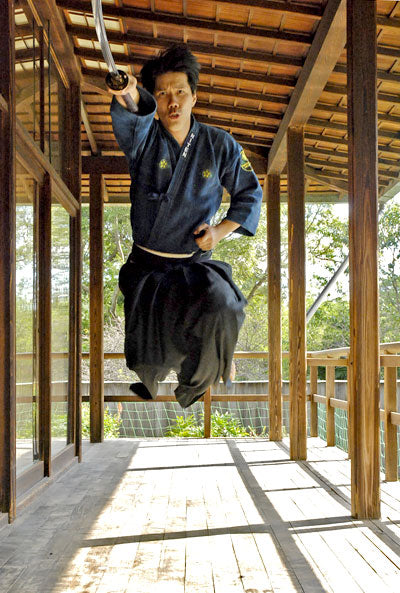Your Cart is Empty


Not all forms of Japanese swordsmanship involve direct contact between a practitioner's sword and a target. Some focus specifically on the art of unsheathing and drawing a sword, such as iaijutsu. Described as one of the disciplines for the classical warrior bushi, it has deep roots cemented into Japan's history. So, what's the history behind iaijutsu?
The Early Days of Iaijutsu
Iaijutsu is believed to have originated around the same time as traditional Japanese swords like the katana, tachi and wakizashi. During feudal Japan, warriors known as bushi were given swords as weapons to use against invaders and enemies of their respective dynamo. Of course, nearly all of these swords featured a curved blade rather than a straight blade. Japanese bladesmiths during the region's feudal period discovered that swords with a curved blade were more effective than those with a straight blade. Among other things, the curved blade allowed for smoother attack patterns while also protecting the blade from breakage.
But bushi were accustomed to using swords with a straight edge, so they were forced to train using these newly forged swords with a curved blade. This led to the development of new training regimens centering around curved swords, including iaijutsu. With iaijutsu, bushi were taught how to unsheathe and draw swords with a curved blade more efficiently, giving them the upper hand against their opponents on the battlefield.
Kenjutsu Came First
Historical documents suggest that iaijutsu first appeared around 15th century. Assuming this is correct, it means that kenjutsu came first. Of course, this makes sense considering that kenjutsu is a blanket term that describes all forms of traditional swordsmanship, whereas iaijutsu specifically focuses on the art of unsheathing and drawing a sword.
As kenjutsu began to branch out, new styles of swordsmanship were invented in feudal Japan, thus leading to the development of iaijutsu. Since then, it's remained a historically significant style of Japanese swordsmanship that's still practiced by tens of thousands of people throughout the world.
The 2 Positions of Iaijutsu
While iaijutsu can be practiced in dozens of different ways, it generally uses two specific positions or postures. The first position is known as iai-goshi, which involves the practitioner lowering his or her body so that they are essentially crouched. The second position is known as tachi-ai, which involves the practitioner standing while unsheathing and drawing his or her sword. There's also a third position called tate-hiza, which involves the practitioner sitting on the floor. However, tate-hiza is rarely used because it restricts the practitioner's mobility.